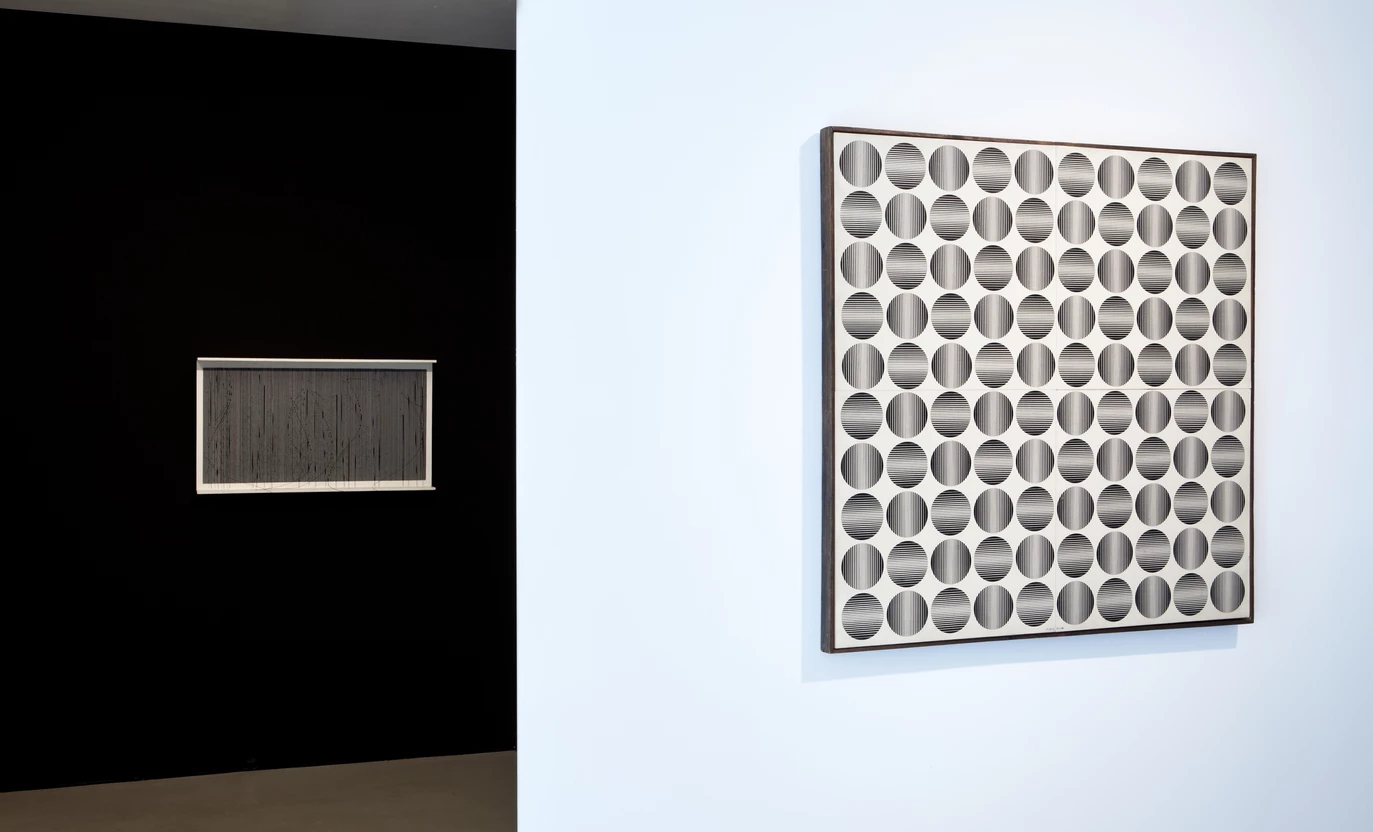Cortesi Gallery is delighted to present The Concrete Utopia. Ivan Picelj and New Tendencies 1961-1973, an exhibition dedicated to explore the production of the Croatian artist Ivan Picelj (1924-2011).
Inaugurated at the gallery’s London space last May, The Concrete Utopia arrives to Lugano after a warm reception from the public and critics, enriched by works by Piero Dorazio, Walter Leblanc, Heinz Mack, Henk Peeters, Otto Piene, Paolo Scheggi, Jesús-Rafael Soto, Grazia Varisco.
As a result of a collaboration with the Museum of Contemporary art in Zagreb (MSU), which houses the artist’s personal archive and library, and with Anja-Picelj Kosak, daughter of the artist who passionately followed the development of the project, this exhibition represents an unmissable occasion to look with fresh eyes at the international movement Nove Tendecije (Croatian for New Tendencies), of which Picelj was protagonist and pioneer.
New Tendencies was born in Zagabria, Croatia (then Jugoslavia), in 1961. In that year, the Museum of Contemporary Art hosted the first exhibition that saw the participation of artists and critics from all over the world, who pursued the idea of “art as visual research” – from groups ZERO e GRAV, to groups N e T.
Beyond paying homage to Picelj’s extraordinary contribution to the neo-avantgarde of the 60s and 70s, this show also aims to confront his work with the production of the artists affiliated with the New Tendencies.
On display there will be works by leading figures of Düsseldorf’s group ZERO: a Fire Painting (1964) by Otto Piene, who took part in every movement’s exposition between 1961 and 1969, and a Lichtrelief by Heinz Mack, an aluminum sheet folded and curved to rhythmically reflect beams of light. Mack’s production and research had a lot in common with the movement’s one. In fact, he was present in Jugoslavia in 1961, 1963 and 1969, and also in the exhibition held in Leverkusen in 1964.
On that same year, Walter Leblanc was amongst the participants to the Nouvelle Tendance. Propositions visuelles du mouvement international, a presentation of New Tendencies, held at Palais du Louvre and at the Musée des Arts Decoratifs in Paris. His Mobilo-Statique LB 36 (1962), plays with the viewer’s gaze, unsettling his perception with the apparent movement of blue and red hues, colours preferred by Picelj himself, who used them in his CTS-1(1966), which he realised in three-dimensional enamelled metal modules.
Mercuriale (1970) by Grazia Varisco will tell the role of one of the few women artist within the New Tendencies, to the last edition of which took part also the Venezuelan Jesús-Rafael Soto, with two works and an environment on the line of Escritura (Writings) (1973), exhibited at Cortesi, where the surface appears to reveal a mysterious script that visually recedes in a vertical forest of painted lines.
Another fundamental addition to the show is the Italian Paolo Scheggi, with his layered monochromatic work Per Una Situazione (1962). Scheggi was a friend and close collaborator of Picelj; together they discussed ways to extend the movement’s operational scope, as shown in a set of period photographs portraying the two talking together, taken during the fourth edition of New Tendencies, in 1969, and included in the comprehensive catalogue edited by Mousse, which features a compilation of widely unpublished research notes, documents and photographs. From the finely carved wood reliefs, to the early 60s shimmering metal compositions in brass and silver; from the optical experimentations and the modules in painted metal of the mid-60s, to the chiseled metals of the early 70s, left au naturel or with a touch of black that plays with light’s absorption and reflection, Picelj’s works have entered the collections of major international museums, including the MoMA in New York and the Victoria & Albert Museum in London.
However, the artist was still lacking recognition from the market, thereforeCortesi Gallery strives to bridge this gap with The Concrete Utopia. Ivan Picelj and New Tendencies 1961-1973.





